What is a Product Owner? The Role, What to Do, and Necessary Skills
With the increasing adoption of Scrum, Product Owners have also been gaining attention and demand in recent years.
Product Owners are required to have the skills to accurately understand and organize the requirements of customers.Without such skills, it is impossible to ensure the value of the product, and the job of product owner carries a great deal of responsibility.
This article will serve as confirmation of the skills required at the field level, not only for those who aspire to become a product owner, but also for those who are currently active in the field as a product owner.
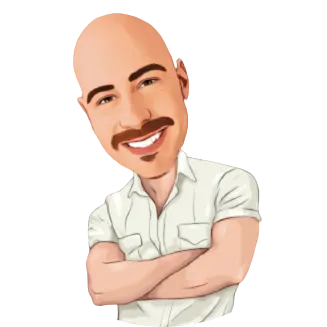
What you will learn in this article
- What is the job and role of a product owner?
- Skills required of a Product Owner
- Difference between a Product Owner and a Scrum Master
- Difference between a Product Owner and a Project Manager


Our Certified Product Owner class is a great way to learn directly from Joe Justice, who knows the world of Agile development.
The greatest advantage of the Certified Product Owner program is that you will not only learn from the curriculum, but you will also receive direct advice from his experience that you can apply in the field!



I’ll be happy to answer any questions you may have!
What does a product owner do? What do they do?
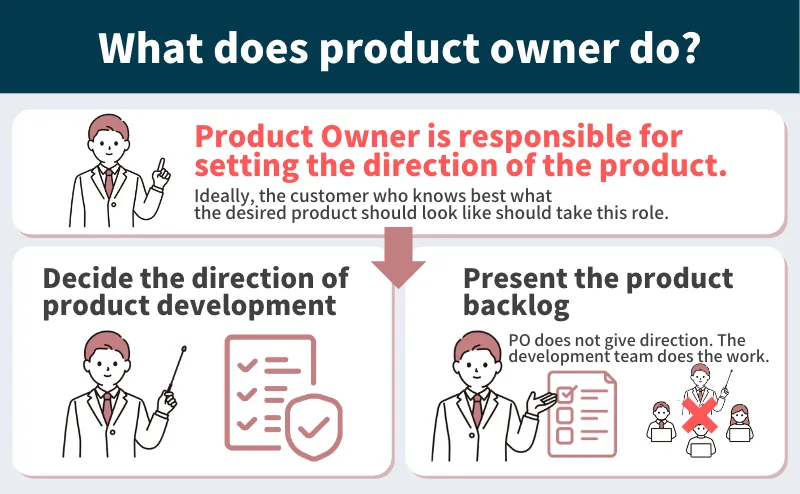

The Product Owner is responsible for setting the direction of the product.
Ideally, the customer, who knows best what the desired product should look like, should take on this role.
The job of deciding the direction of product development
The product owner is responsible for setting the direction of development and maximizing the value of the product.
The product owner performs an activity called refinement (so-called requirements definition) and creates a “product backlog” together with the team and the customer.
The product owner does not give instructions (only presents the product backlog).
The product owner does not give instructions to the development team, but presents the product backlog. Since the development team works based on the product backlog, it is necessary to clarify the information.
For example, the value of the product, the target image, customer requirements, and priorities for development work should be clarified in detail. This should be done during the refinancing activity, and a definition of readiness (DoR) should be defined so that the developers can start development immediately.
The Product Owner must be aware of the status of the entire development team and respond appropriately to the situation.
He does not give instructions, but allows the self-organized team to work autonomously. Ideally, 50% of his/her time should be spent working with the development team.
Roles and Responsibilities of the Product Owner
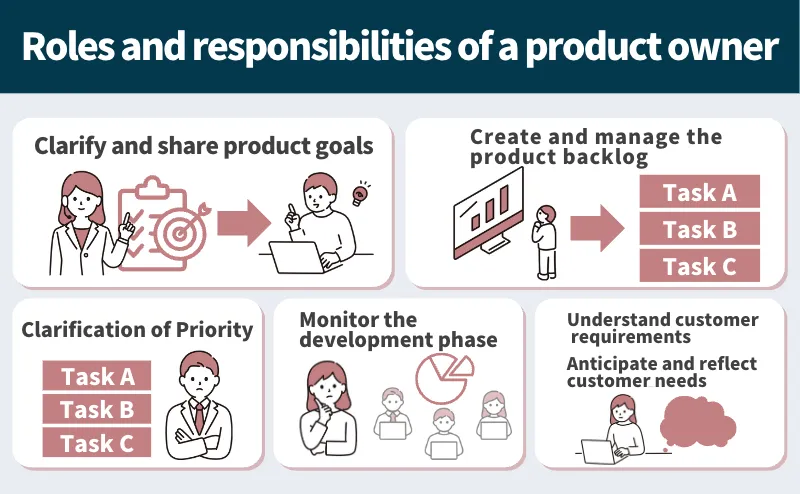

The following are the tasks of the product owner.
- Clarify and share product goals (vision)
- Creating and managing the product backlog
- Clarification of priorities
- Monitoring the development phase
- Understanding customer requirements, as well as anticipating and reflecting customer needs Clarify and share product goals (vision)
The product owner clarifies the vision in order to maximize the value of the product.
To this end, the product owner creates a visual vision statement and accurately communicates it to all team members, including stakeholders.
If the vision is shared, even if the product owner is not present, the team can take appropriate action when problems arise.
Creating and Managing the Product Backlog
Next, the product owner creates backlog items for the Scrum team to work with.
By reviewing the backlog items, the Scrum team will be able to understand the details of each backlog item.
Guests can easily book tickets and complete the booking and payment immediately on the online page.
- As a guest, you can easily navigate to the ticket reservation page.
- Reservation page is easy to view and payment can be easily completed
- Ability to change or cancel reservations as a guest
Clarification of priorities
The product owner is responsible for prioritizing backlog items.
The product owner is responsible for refining the product backlog as well as defining product features.
In scrum development, the priorities are constantly changing as the product backlog is executed from the highest priority items and any problems or modifications are made or reviewed as needed.
Refinement activities are recommended to be performed at least once per sprint, so the priorities will change each time.
This includes prioritizing tasks.
Development Phase Monitoring
When developing a new product or feature, it will be properly defined, tested, and implemented.
The product owner will work with stakeholders (key players) to carefully monitor each stage of the product development process to ensure success.
Understand customer requirements and anticipate and reflect customer needs
Product owners must understand customer needs and accurately reflect them in their products.
It is meaningless to create a product that everyone will want if it is not what the customer needs.
An important role of the product owner is to ensure that stakeholders can see and understand the product backlog.
They can understand how to incorporate stakeholder feedback into specific product features, why certain tasks are prioritized over others, etc.
- How scrum teams will incorporate their feedback into specific product features
- Why certain tasks are prioritized over others
- Realistic timelines for requests regarding new features
Skills required of a product owner
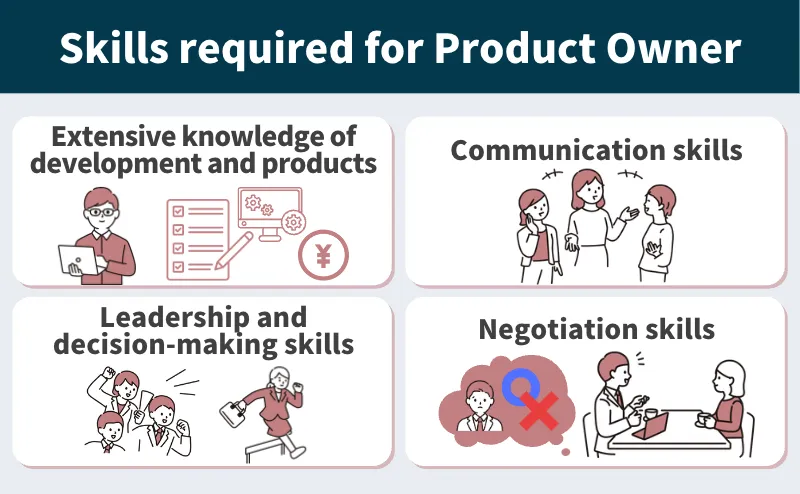

The product owner plays a key role in the success of Scrum development. What skills are required of such a Product Owner?
- Extensive knowledge of development and products
- Communication skills
- Leadership and decision-making skills
- Negotiation skills
Extensive knowledge of development and products
Extensive knowledge of development and products is necessary to implement the products that customers require and to solve the problems that customers face. Product owners are also responsible for budgets and costs.
They must make the best use of these resources to provide the solutions that customers seek.
Communication Skills
The development team needs to work as one toward a common goal. Development information must be shared.
Communication skills are essential to ensure that the vision of the goal is shared by the entire team.
If the vision is not communicated, the development team may not operate well. It is also a risk that the project will fail.
Leadership and Decision-making skills
There are many situations where the product owner needs to demonstrate leadership and decisiveness.
If you listen to all of the customer’s requirements, you risk only inflating costs and obscuring the goal of the development process.
You must understand the customer’s desired product, propose various solutions, prioritize them, and release a product with the high value the customer desires.
Negotiation skills
Product owners sometimes need to say “no.”
They need to consider whether they need to accept everything the customer says in order to deliver a high-value product with limited costs and resources.
Difference between a Product Owner and a Scrum Master
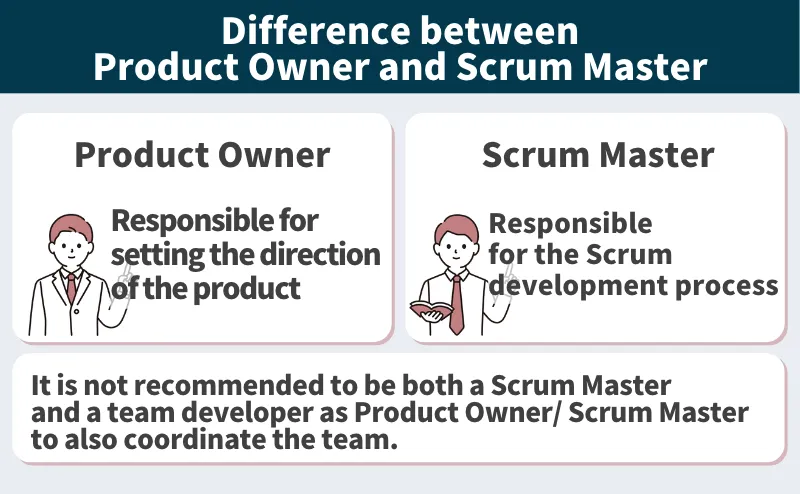

A Scrum Master helps to facilitate development. A Scrum Master, as the name implies, is the master of Scrum, or someone who is well versed in Scrum development, and is responsible for ensuring that the Scrum development process is being executed correctly. They provide coaching and support for communication within the team.
Because they also coordinate between the product owner and the team, it is said that it is not recommended to have both a Scrum Master and a Product Owner.
Difference between a Product Owner and a Project Manager
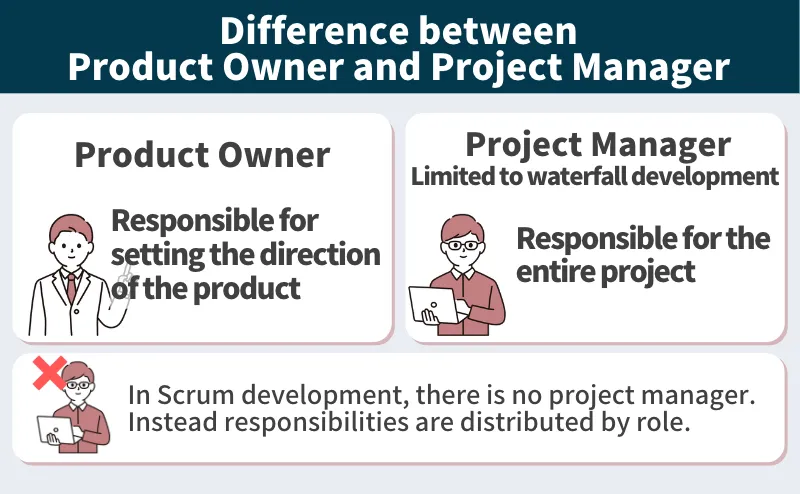

A project manager is the person responsible for the overall project, including schedule management and team management in traditional waterfall development. In Scrum development, there is no project manager. Instead, responsibilities are distributed by role.
In Scrum development, the product owner is responsible for the product, while the Scrum Master supports the product owner and the team.
Future Prospects for Product Owners
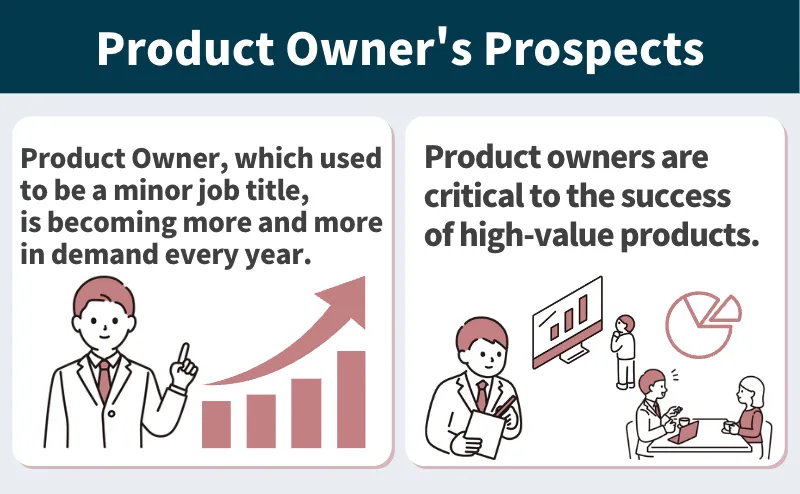

The demand for product owners is increasing every year. In the past, product owner was not a major job title.
However, in recent years, product owners have been recognized as an important role for product development.
Product Owners play an important role in ensuring that the requirements are well understood and lead to the successful development of high-value products.
Qualifications to Become a Product Owner
You will take the Certified Product Owner training, which we also offer, and learn the skills required of a Product Owner in a real-world setting.
Simply by taking the Certified Product Owner training, you can expect to improve your skills as a product owner, and if you learn and become certified properly, you will be able to objectively prove your skills as a product owner.
In the class, you will learn all aspects of what is required of a product owner. Specifically, how to determine personas, how to plan releases, how to make decisions, and more.


Our Certified Product Owner classes are taught directly by Joe Justice, who knows Agile development as it happens around the world.
The greatest advantage of the Certified Product Owner program is that you will not only learn the curriculum, but you will also receive direct advice from a Certified Product Owner who has the experience to apply it in the field!



I’m here to answer your questions and give you advice directly!
Tell us Joe! Product Owner
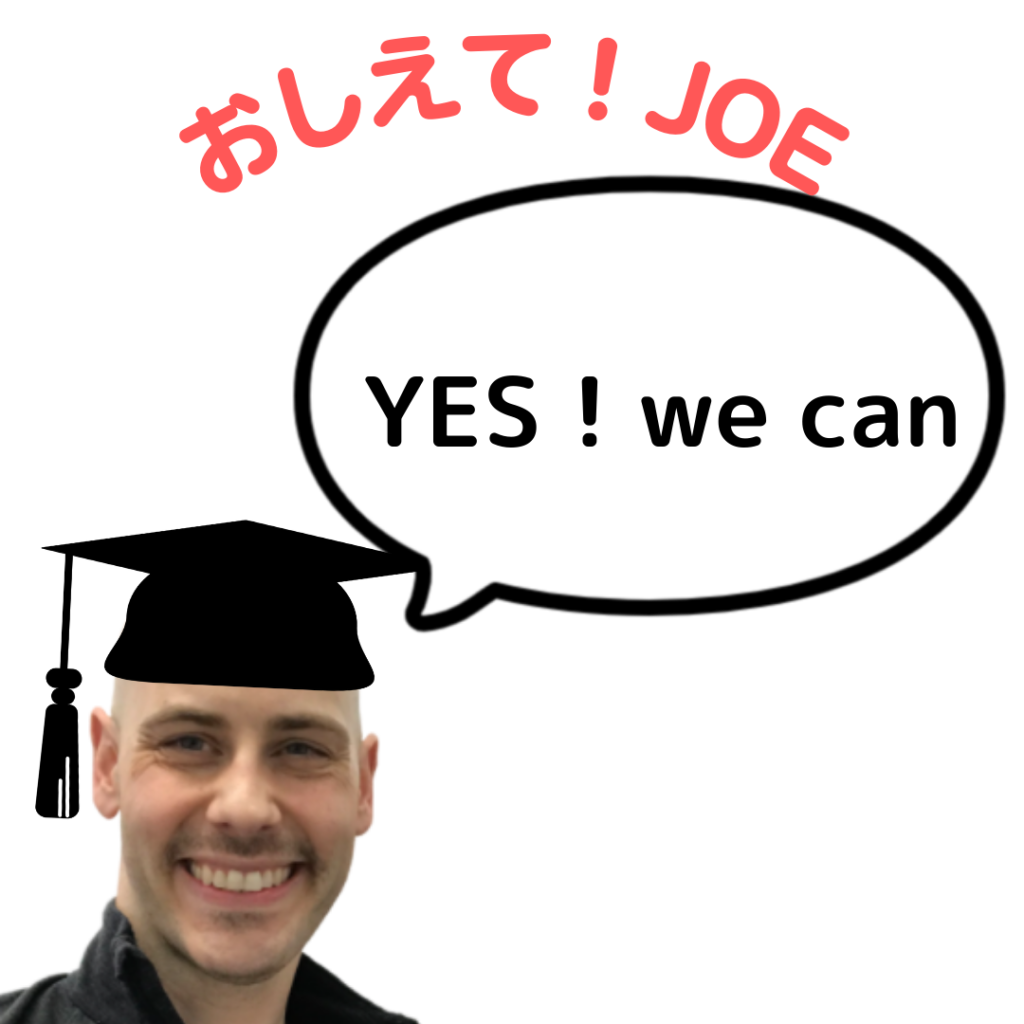

We asked Joe Justice, a leader in the Agile industry, about the ideal product owner.
Who should be the Product Owner?


The first Scrum team was started around 1994. Back then, the Product Owner was the marketing person, because they knew the customers best. The ideal product owner was the marketing person, because they knew their customers best. In other words, the ideal product owner is the customer (client). The next best person is the one who can clearly think of a vision for the product.
How do we get the customer (client) to take on the role of product owner?


Of course, it is difficult to ask a person with little understanding of Agile or Scrum to “become a Product Owner from tomorrow. In that case, a team member who understands the role and responsibilities of the Product Owner can be the “Alternate Product Owner. They will then pair up with the customer representative to promote the Product Owner duties.
Conclusion
Product Owner is a position that has been gaining attention and demand in recent years. They make a list of requirements for the product, create a product backlog, and lead the product to success. Although this is an important role, there are not that many people who are currently active as product owners. Those who want to be active as a product owner should not only gain practical experience, but also participate in training programs and obtain certifications.
As a Certified Product Owner, you will work with the Scrum team to increase the value of the product, improve the satisfaction of customers, the team, and stakeholders, and aim for development that makes you happy as well.


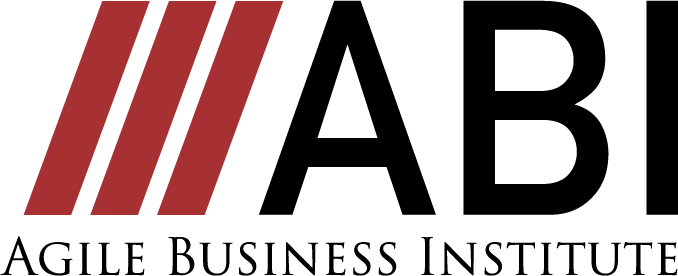
コメント